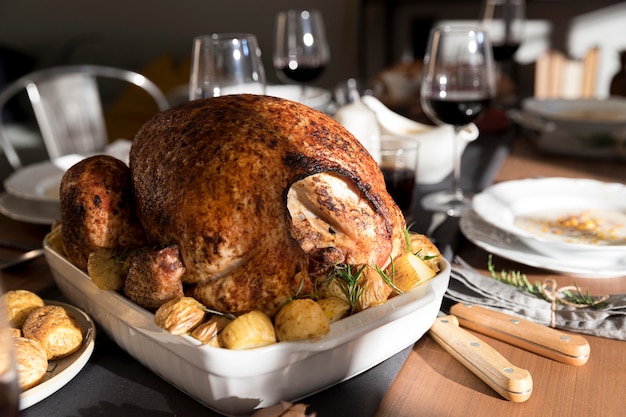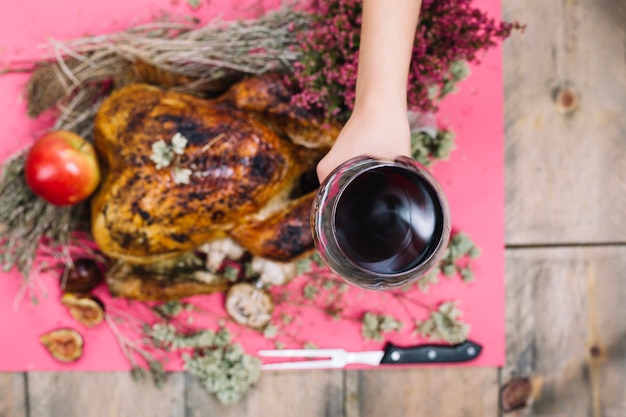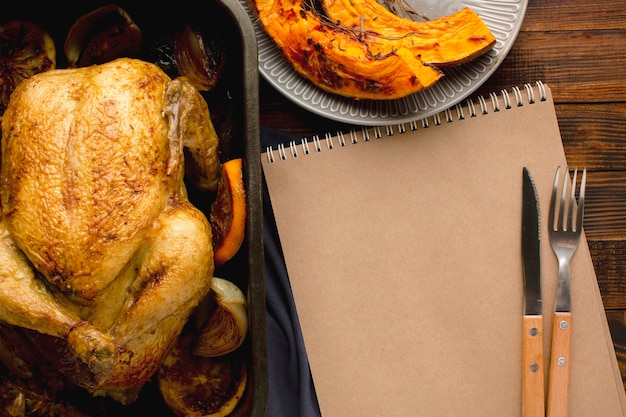Alright, let's talk turkey, shall we? But not just any turkey, mind you – we're talking about the succulent, juicy, golden-brown roast turkey breast! It's the star of many a dinner table, perfect for family gatherings, festive occasions, or even just a special weeknight meal.
However, mastering the art of roasting a turkey breast can be a bit tricky, especially if you're aiming for that perfect balance of tenderness and flavor. But worry not, my fellow culinary enthusiasts! I've been on this journey myself, navigating the world of oven-baked turkey breasts, and I'm here to share my secrets and insights for achieving the juiciest, most delicious turkey breast you've ever tasted. Buckle up, because we're diving into the world of turkey breast roasting, from the basics to the finer details, and everything in between.
Part 1: The Foundations of Turkey Breast Roasting

Unveiling the Turkey Breast
Let's start with the main attraction: the turkey breast. These come in all shapes and sizes, from bone-in to boneless, fresh to frozen. Personally, I'm a big fan of boneless, skin-on turkey breasts. They tend to be more tender, cook more evenly, and the skin helps to lock in moisture and flavor.
Temperature: The Key to Success
Now, the golden rule of roasting turkey breast: cook it to an internal temperature of 165°F (74°C). This ensures the turkey is cooked through and safe to eat. A meat thermometer is your best friend here – a trusty tool to guarantee your turkey reaches the perfect temperature.
However, every oven behaves differently, and each turkey breast is unique. This means that while general guidelines for cooking time exist, relying solely on those can be a gamble. Always double-check the internal temperature with a thermometer to guarantee a perfectly cooked turkey breast every time.
Part 2: Prepping for a Culinary Masterpiece

Brining: A Game Changer
Before we embark on the roasting journey, let's talk about brining. Some folks might view brining as an unnecessary extra step, but trust me, it's a game-changer! It involves soaking the turkey breast in a salt-water solution, which essentially hydrates the meat, preventing dryness, and enhancing flavor. The result? A much juicier, more flavorful turkey breast. My go-to brine recipe is a simple blend of salt, sugar, and water, perfect for achieving that desired juicy result. Just ensure you have a container large enough to accommodate the turkey breast.
Seasoning: The Flavor Symphony
Now, let's talk seasoning, the magic ingredient that elevates your turkey breast to new heights. You can go as basic or as fancy as you like, but a simple blend of salt, pepper, and garlic powder is always a winner. Don't be shy with the seasoning, a generous dose of flavor is essential for a truly satisfying roast turkey breast.
The Art of Roasting
Alright, let's get to the heart of the matter – the roasting process itself. Preheat your oven to 325°F (160°C) – this is the ideal temperature for slow and even cooking. For best results, use a roasting rack placed inside a large baking pan. This allows air to circulate around the turkey breast, ensuring even cooking. Place the turkey breast on the rack, and remember to pat it dry with paper towels before you start. This simple step prevents excess moisture that could steam rather than roast the turkey.
Part 3: Deciphering the Oven Cooking Time Code

Turkey Breast Size: The Guiding Factor
Remember how I mentioned that turkey breasts come in various sizes? Well, that's where the cooking time comes into play. A small turkey breast will cook much faster than a large one. For instance, a 3-4 pound turkey breast will generally take about 1 hour and 30 minutes to 2 hours to cook, while a 5-6 pound turkey breast will take about 2 to 2.5 hours.
The turkey breast cooking Time Table
Here's a helpful table to provide a general idea of the cooking times for different sizes of turkey breasts. Remember, these are just guidelines. Always use a meat thermometer to check the internal temperature for accuracy, ensuring your turkey breast is cooked to perfection.
| Turkey Breast Weight (lbs) | Approximate Cooking Time |
|---|---|
| 3-4 lbs | 1 hour 30 minutes to 2 hours |
| 5-6 lbs | 2 to 2.5 hours |
| 7-8 lbs | 2.5 to 3 hours |
| 9-10 lbs | 3 to 3.5 hours |
Part 4: The Art of Monitoring Your Roasting Progress
Patience is Key
Patience, my friend, is your most valuable ally in the turkey breast roasting process. Resist the temptation to constantly peek into the oven. Every time you open the door, you release precious heat, potentially affecting cooking time and resulting in unevenly cooked turkey breast. I recommend checking the turkey breast every 45 minutes or so, allowing it to cook undisturbed for the most part.
The Power of Basting
Another trick up my sleeve: basting. Every 30 minutes or so, use a spoon to baste the turkey breast with the pan drippings. This helps keep the turkey breast moist and flavorful, enhancing its succulent texture.
Rest Time: A Vital Step
Once your turkey breast reaches the desired internal temperature of 165°F (74°C), take it out of the oven and let it rest for 15-20 minutes before carving. This crucial step allows the juices to redistribute, ensuring a more tender and succulent turkey breast.
Part 5: Serving Up a Culinary Delight
Carving the Turkey Breast
After the resting period, you're ready to carve your masterpiece. Use a sharp carving knife to slice the turkey breast into thin, even slices, making sure to remove any excess skin. Serve immediately or keep it warm in a slow cooker on low heat.
Making the Most of Leftovers
Got leftover turkey breast? Don't worry, they're a culinary treasure! They're perfect for sandwiches, salads, or even added to pasta dishes. Store leftovers in the refrigerator for up to 4 days or freeze them for up to 2 months for later use.
Part 6: Enhancing Your Roasting Expertise
The Temperature Advantage
A consistent oven temperature is crucial for even cooking. If you have an oven thermometer, use it to ensure your oven maintains the correct temperature throughout the roasting process.
Don't Crowd the Oven
If you're roasting a large turkey breast, ensure it has ample space in the oven to cook evenly. If you're roasting multiple turkey breasts, you might need to do them in batches to prevent crowding and ensure proper airflow.
Herbs: Adding a Touch of Flavor
For an extra flavor boost, try adding fresh herbs to your turkey breast. Rosemary, thyme, and sage are all excellent choices, adding a delightful aroma and complexity to your roast.
Pan Drippings: Culinary Gold
Those golden pan drippings are pure culinary treasure! Use them to create a delicious gravy. Just strain the drippings, skim off any excess fat, and simmer them with some flour and broth. The result is a flavorful gravy that perfectly complements your roast turkey breast.
Part 7: Beyond the Traditional
Spicing Up Your Turkey Breast
While a classic roast turkey breast is always a delight, don't hesitate to get creative! You can experiment with different flavor profiles by adding herbs, spices, citrus, or even a touch of honey to your seasoning blend.
stuffed turkey Breast: A Flavorful Adventure
For an exciting twist, stuff your turkey breast with your favorite fillings. Think sausage, stuffing, or even a creamy cheese mixture, adding a delightful layer of flavor and texture to your roast.
Spiced Turkey Breast: A Taste of Adventure
For a more adventurous palate, try adding some chili powder, cumin, or paprika to your seasoning blend. These spices will add a kick of warmth and complexity to your turkey breast, creating a unique flavor profile.
Part 8: Turkey Breast Roasting: Frequently Asked Questions
1. How do I know if my turkey breast is done?
The best way to determine if your turkey breast is cooked through is by using a meat thermometer. Insert the thermometer into the thickest part of the turkey breast, ensuring it doesn't touch any bone. The turkey breast is done when the internal temperature reaches 165°F (74°C).
2. Can I roast a frozen turkey breast?
It's not recommended to roast a frozen turkey breast. The turkey breast will not cook evenly and may not reach a safe internal temperature. If you must roast a frozen turkey breast, thaw it completely in the refrigerator before roasting.
3. What can I do if my turkey breast is overcooked?
Overcooked turkey breast will be dry and tough. To prevent this, make sure you check the internal temperature frequently and don't overcook it. If you do overcook your turkey breast, try shredding it and using it in dishes like soups or salads.
4. Can I reheat leftover turkey breast?
Yes, you can reheat leftover turkey breast. The best way to reheat it is to place it in a preheated oven at 350°F (175°C) until heated through. You can also reheat it in the microwave or on the stovetop.
5. What are some good side dishes to serve with roast turkey breast?
Roast turkey breast pairs well with a variety of side dishes. Some classic favorites include mashed potatoes, stuffing, cranberry sauce, and green bean casserole. You can also explore other vegetables like roasted brussels sprouts, sweet potato casserole, or asparagus.
Part 9: Mastering the Art of Turkey Breast Roasting
There you have it, my comprehensive guide to roasting a turkey breast. It might seem like a lot of information, but with a bit of practice and patience, you'll become a turkey breast roasting expert in no time.
So go forth, my fellow culinary enthusiasts! Conquer your oven and embrace the delicious world of roasted turkey breast. Happy roasting!
Everyone is watching

Corn on the Cob: The Ultimate Guide to Perfectly Cooked Ears
Healthy MealsAh, corn on the cob. Just the name evokes images of sunny days, barbecues, and that sweet, juicy flavour that ...

Perfect Pork Roast Oven Cooking Time: A Guide to Delicious Results
Healthy MealsThere's something truly satisfying about a perfectly roasted pork. The aroma alone is enough to make your mout...

Ham Cooking Time: How Long to Bake, Smoke, or Boil a Delicious Ham
Healthy MealsAh, ham. It's a classic, isn't it? A real crowd-pleaser, especially around holidays. And when done right, it'...

Scallops: The Ultimate Guide to Perfect Cooking
Healthy MealsAh, scallops. Those delicate, sweet, and utterly delicious morsels of the sea. They hold a special place in my...

Spaghetti Squash: The Ultimate Guide to Cooking and Serving
Healthy MealsRemember that time you saw spaghetti squash at the supermarket, looking all bumpy and strange, and thought, "W...
